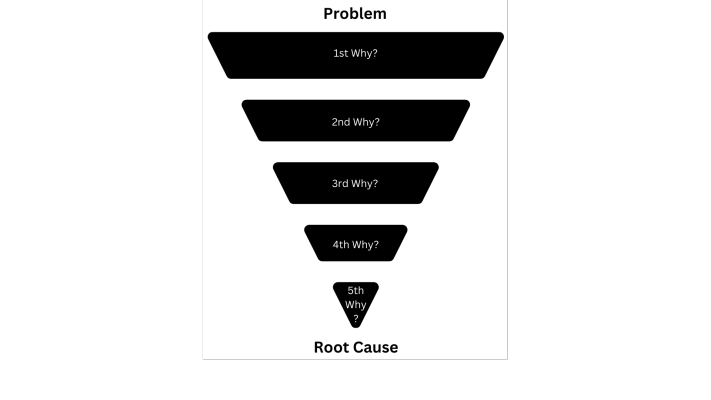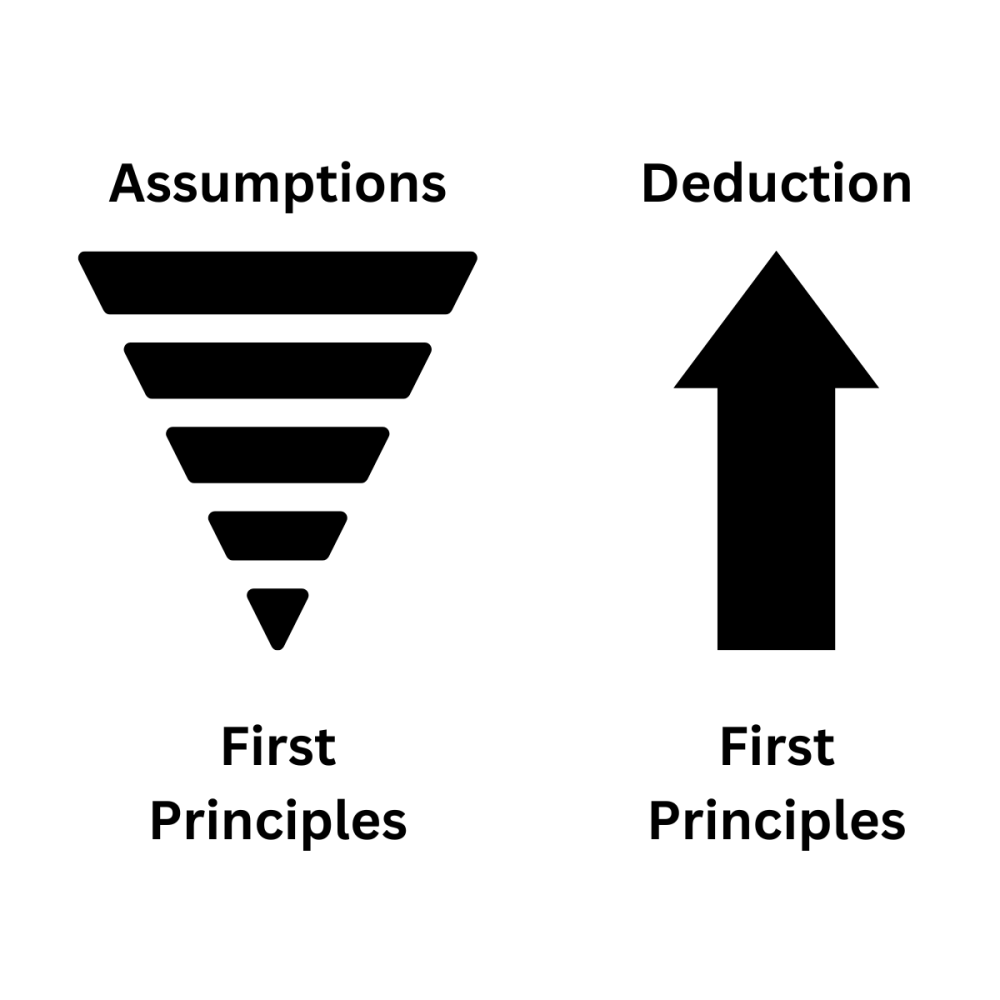“With first principles thinking, you boil things down to the most fundamental truths and then reason up from there.” – Elon Musk
In the rapidly changing world, finding innovative solutions to tackle users’ pain points and staying ahead of the competition is of great importance. Conventional thinking can lead to incremental improvements and may be time-consuming. By the time the improvements are done, a new set of challenges may emerge.
We need a fresh approach to thinking to truly innovate. Enter First Principles Thinking – a method that empowers product managers to break free from existing constraints, challenge assumptions, and unlock transformative solutions.
What is First Principles Thinking?
Textbook Definition
First Principles thinking is the method of reasoning that involves deconstructing a complex problem into its most basic and fundamental elements and then reconstructing it from the ground up, using logic and rational thinking, to derive new insights and solutions.
Simple Definition
First Principles thinking is going back to the basics and questioning everything you think you know about a problem or situation. It is a method to disassemble challenging issues into their component parts and then rebuild them from scratch.
Simply put, First Principles Thinking is “Think like a Scientist” as scientists do not assume anything.
Origins of First Principles Thinking
The concept of First Principles thinking can be traced back to the ancient Greek philosopher Aristotle, who used it as a foundation for logical reasoning and scientific inquiry. It gained prominence in the modern era through the work of physicist and philosopher Sir Isaac Newton, who used First Principles thinking to formulate his laws of motion and gravitation.
Elements of First Principles Thinking
- Challenge the Status Quo & Choose the Right Problem to Solve

First-Principles thinking forces you to use the “Five Whys” root cause analysis technique to probe the core of the issue.
Break down the problem to the atomic unit.
Work solution only after the problem is broken down to the atomic level.
- Focus on Functional Perspective
Prioritize functionality over aesthetics.
Example: Evolution of Suitcase: From Heavy Leather Suitcase to Modern Lightweight Wheeled Suitcase. Read More: https://www.travelandleisure.com/style/evolution-of-luggage
- Prioritize with a “No”
Build only what’s necessary. Drop unnecessary items. That’s Minimum Viable Product (MVP).
Enhance MVP by building the next necessary functionality.
Example: AirBnB MVP. Read More: https://fueled.com/blog/airbnb-mvp/
- Generate new insights and solutions by exploring different possibilities and combinations. Be open to innovative and unconventional ideas.
Building a First Principles Mindset
1.Apply First Principles thinking to everyday problems and situations.
2.Break down complex issues into their basic components and analyze them from scratch.
3.Question assumptions.
4.Think beyond existing solutions.
5.Explore unconventional approaches and consider different perspectives.
In Product Management, use First Principles thinking to evaluate user needs, market dynamics, and existing solutions. Question assumptions about features, pricing, and distribution, and seek innovative ways to address customer problems and create value.

Example
In recent times, Elon Musk is the flag bearer of the First Principles Thinking. SpaceX was born using the first principles thinking.
The cost of purchasing a rocket was astronomical ~ US$ 65 million. The problem was rethought using the First Principles thinking:
Q. What the rocket is made up of?
A. Alloys, Carbon Fibers
Q. What is the value of these materials?
A. 2-5% of the price of the rocket
And So on….
That led to a decision to build its own rockets, thereby reducing the cost by 10x.
Summary
First Principles Thinking is deconstructing a complex problem into its most basic and fundamental elements.
Question any analogies and hasty inferences.
Build something completely new and useful.
With first principles thinking, product managers can create customer experiences from scratch, while others look for analogies.
